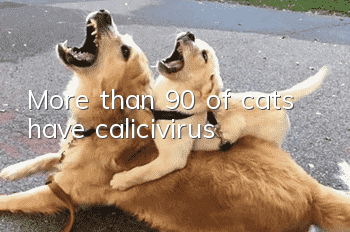More than 90% of cats have calicivirus

More than 90% of cats have calicivirus because feline calicivirus is a common disease in cats. Feline calicivirus can cause mental distress, conjunctivitis, stomatitis, bronchitis, and eye and nose discharge. Symptoms such as an increase in symptoms are respiratory infectious diseases, and the incidence rate is relatively high, but the mortality rate is low and it can generally be cured, so there is no need to worry too much.
Feline calicivirus infection can occur throughout the year, but is most common in spring. For cats, cats of all ages and genders are at risk of infection. Cats with calicivirus may not appear to be sick, but feline calicivirus is highly contagious and an infected cat can shed the virus through secretions from the mouth, nose, or eyes.
Tip:
Pay more attention to the hygiene and health of your cat, and take your cat for vaccinations on time, which can effectively prevent your cat from being infected with calicivirus.
- How to keep dogs away from skin diseases. If you do this, will you see if your dog will still be infected with skin diseases?
- Can dogs eat liver? What should you pay attention to when giving liver to your dog?
- Is it okay if a dog eats cherry pulp? What should I do if my dog eats cherry pulp?
- The dog doesn't sleep at night and walks back and forth. What's the reason why the dog doesn't sleep at night?
- German Shepherd food intake standards teach you professional formulas to calculate
- How to treat urinary tract stones in dogs? Dogs may need surgery!
- Symptoms of gastrointestinal parasite infection in dogs. Owners should pay attention to deworming their dogs
- What should I do if my dog has no milk? The owner should check quickly and don’t let the puppies starve to death.
- How to make your dog’s hair look beautiful. Looking at your dog’s hair with beautiful hair makes you feel good!
- Dog’s anal gland odor, please note that this is a sign of your dog’s health!



